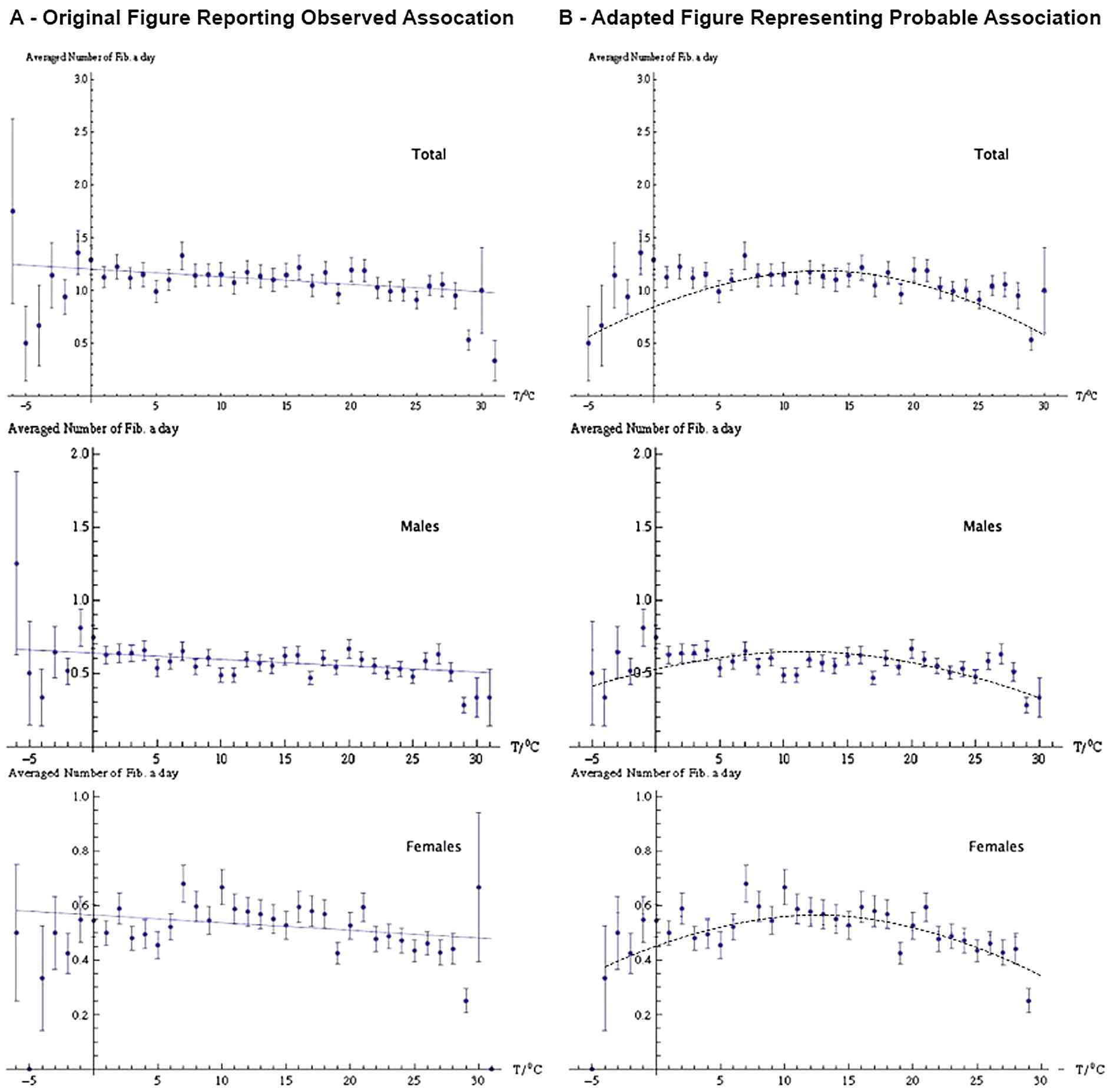Acute-onset atrial fibrillation and ambient air temperature: A linear or a non-linear association?
- DOI
- 10.1016/j.jegh.2014.09.006How to use a DOI?
- Copyright
- © 2014 Ministry of Health, Saudi Arabia. Published by Elsevier Ltd.
- Open Access
- This is an open access article under the CC BY-NC-ND license (http://creativecommons.org/licenses/by-nc-nd/4.0/).
The study by Comelli et al. [1] published in a recent issue of the Journal of Epidemiology and Global Health describing the association between ambient temperature and incidence of acute-onset arterial fibrillation (AAF) in Italy was read with great interest. The authors retrieved data from the electronic health records of the Academic Hospital of Parma for the period of January 2002 to December 2010 (a total of 3287 days) to identify the AAF admissions in the Emergency Department. For all the 3287 study-days, meteorological data of the catchment locality were collected and were linked to the AAF database. The measurements of air temperature used for this study were performed on an hourly basis, and the mean temperatures of each single day were then calculated for analytical purposes. The chronological data of all visits for AAF were interfaced with the temperature data using linear regression analysis. All the days were considered for the analysis, including those without recorded episodes of AAF. Comelli and colleagues analyzed a total of 3633 AAF cases that were observed during the study period. There were 52% males with a mean age of 63 years (SD: ±14) and 48% females with a mean age of 71 years (SD: ±11). The authors reported a slight but significant negative linear correlation between the number of AAFs and the daily mean temperature (R = 0.60; p = 0.001). Comelli et al., in their manuscript, presented the graphical representation of the correlation between episodes of AAF and mean daily temperature by plotting the averaged number of AAF episodes a day across the range of ambient temperature (Fig. 1A). Gender stratified analysis showed that there is a similar and significant negative linear correlation in males (R = 0.58; p = 0.007), but not in females. Females showed a borderline significance though the negative association was very modest (R = 0.36; p = 0.060).

(A) Linear association between episodes of AAF and mean daily temperature as described by Comelli et al. (all sample, males only and females only).(B) Hypothetical U-shaped association between episodes of AAF and mean daily temperature (all sample, males only and females only).
The authors did not provide any information in their manuscript if they had explored the non-linear or non-homogeneous relationship [2] between mean daily temperature and averaged number of AAF, apart from the reported linear relationship, in their exploratory analysis. Examining the graphical presentation of the data provided by the authors (Fig. 1A), it appears that a U-shaped association is a very pragmatic possibility. Additionally, regarding the interpretation of the reported linear association, the authors correctly conceded that the limited number of days characterized by extreme temperatures of <−5 °C and >35 °C would be a limiting factor. Thus, if the extreme temperature days are removed from the analytical scenario, the U-shaped association becomes a more discernible possibility. In Fig. 1B, a hypothetical presentation of the U-shaped association has been provided based on the original figure provided in Comellis et al’s. paper [1].
Conflict of interest
Authors declare no conflicts of interest.
Acknowledgements
None.
Cite this article
TY - JOUR AU - Tanvir Chowdhury Turin AU - Yoshikuni Kita AU - Nahid Rumana PY - 2014 DA - 2014/11/12 TI - Acute-onset atrial fibrillation and ambient air temperature: A linear or a non-linear association? JO - Journal of Epidemiology and Global Health SP - 99 EP - 101 VL - 5 IS - 1 SN - 2210-6014 UR - https://doi.org/10.1016/j.jegh.2014.09.006 DO - 10.1016/j.jegh.2014.09.006 ID - Turin2014 ER -
